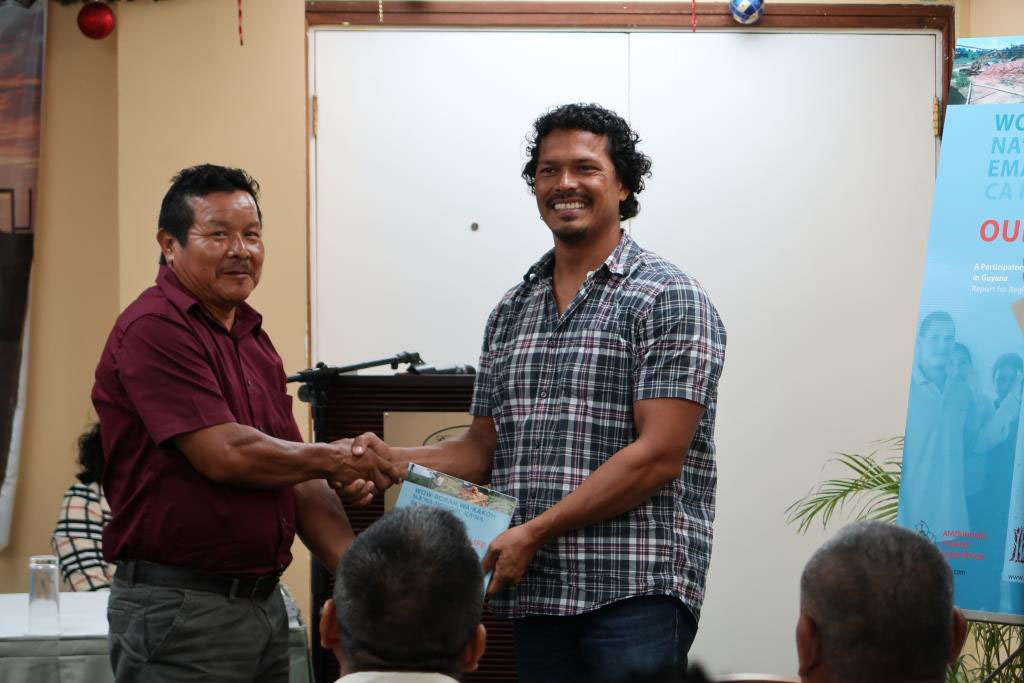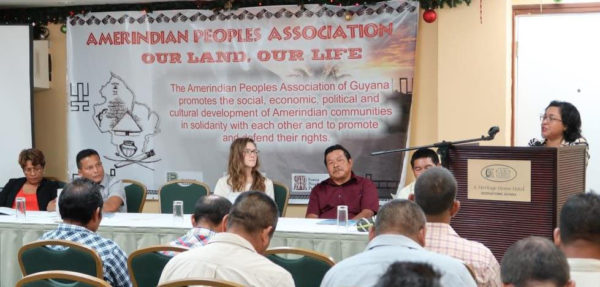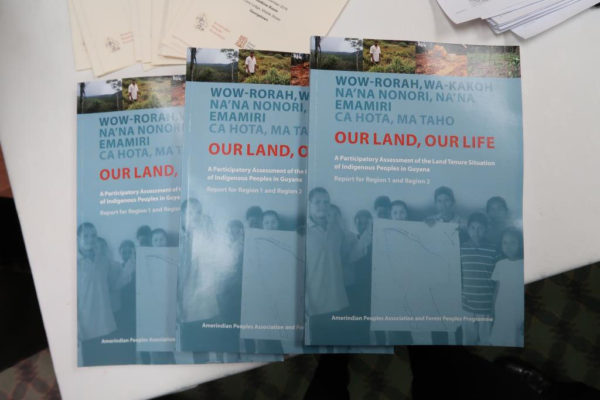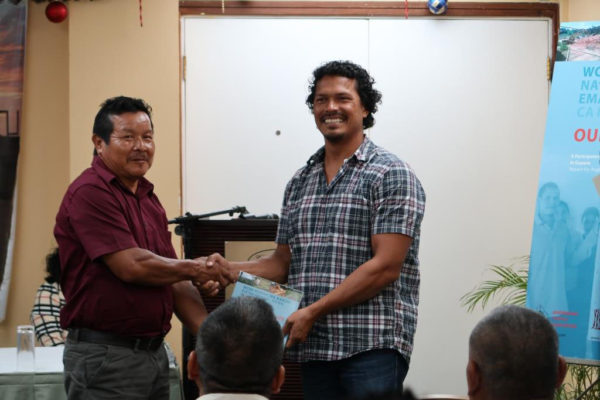The Amerindian Peoples Association (APA) on Friday released a report which it said provided detailed evidence of land rights violations and land conflicts affecting Indigenous Peoples in Regions One and Two.
According to an APA press release, the study examined the land rights of 35 Indigenous Villages and Communities in Region One (Barima-Waini), and seven villages in Region Two (Pomeroon-Supenaam). It was stated that almost one third of the communities have no legally secured land rights, and of the 29 titled Amerindian Villages visited, only one community considers its existing land title description adequate.
“This report contains important information on all the communities visited…about the land and what it means to us,” said APA President Mario Hastings during his presentation at the APA function.
“When we say land, we don’t mean the surface alone. We mean everything above and beneath it from the flora and the fauna that depend on it. For Indigenous People, land is life,” Sharon Atkinson, of Santa Rosa Village and a lead field researcher in the land study, was quoted in the release as saying.
With its origins in 2011, the study was aimed at assisting Village Councils with advancing their land claims and to provide information for national projects and initiatives that addressed Indigenous Peoples’ lands and forests. The press release said that weak land governance and flawed boundary survey practices along with discriminatory national laws on land resource ownership often prevented satisfactory and fair land titling for Indigenous communities. According to the release, data presented in the report showed that over 30 per cent of titled villages and 80 per cent of untitled customary lands were found to have mining concessions imposed on them. It was noted that State Forest Permits or logging concessions were allocated without the Free, Prior and Informed Consent (FPIC) of the Indigenous Communities within 34 per cent of titled villages and 79 per cent of untitled lands.
The study highlighted that mining and logging allocations done without FPIC resulted in destructive mining and logging practices, according to the bulletin. The damage included heavy contamination and pollution of waters, heavy degradation of river banks and forests resulting in water shortages, food insecurity and health problems. Some of the more seriously affected communities included Baramita, Eclipse Falls, Arakaka, Big Creek, Oronoque, Citrus Grove and Canal Bank.
The report, according to the bulletin, proposes that the government and authorities review and amend the 2006 Amerindian Act to align with the articles in the United Nations Declaration on the Rights of Indigenous Peoples (UNDRIP) and related international human rights treaties to which Guyana is a signatory. It also recommends the urgent need to suspend destructive mining and logging operations, the reform of the land titling and demarcation rules for the FPIC to be clearly applied, and the involvement of skilled indigenous mappers and traditional knowledge holders in boundary surveys.









